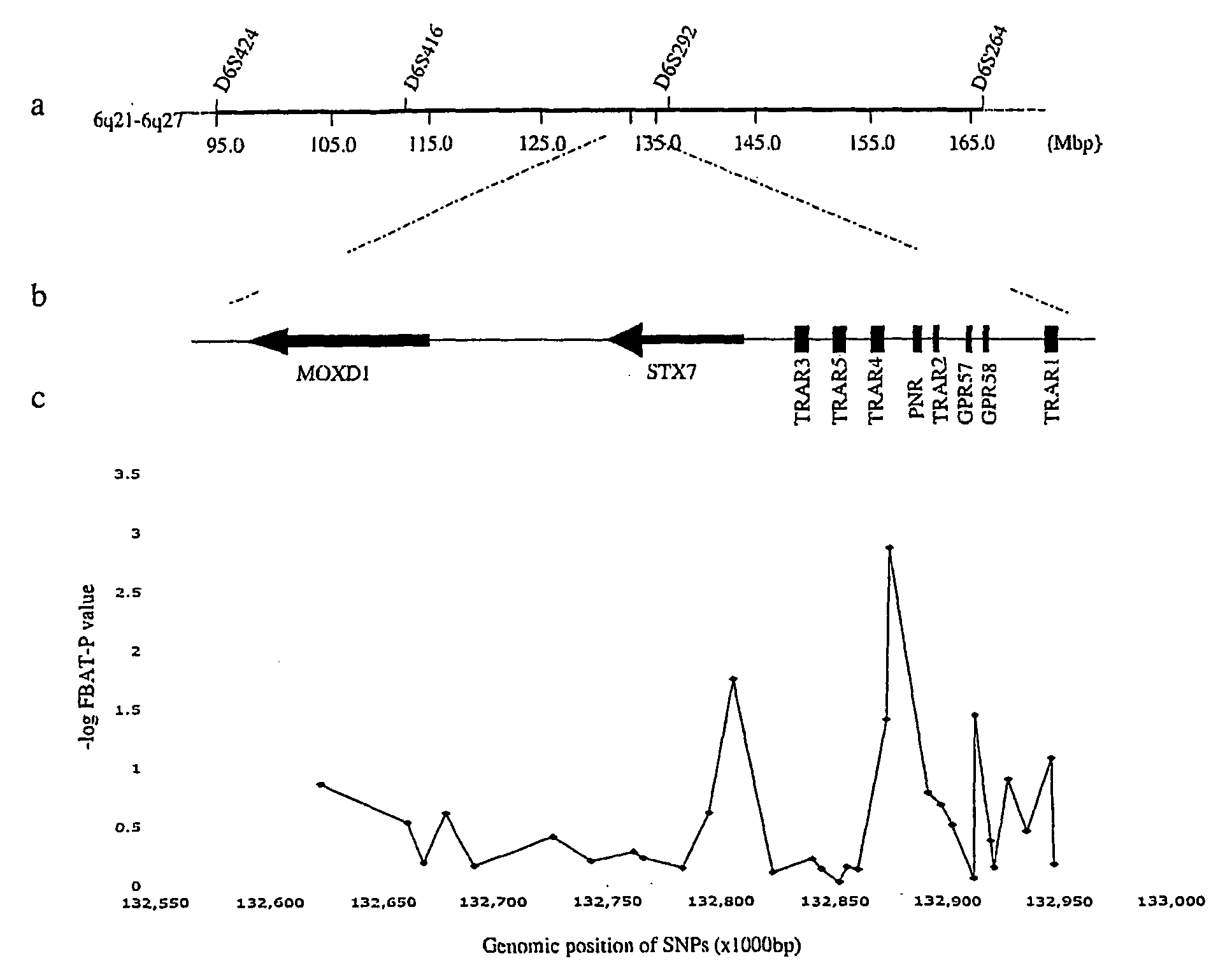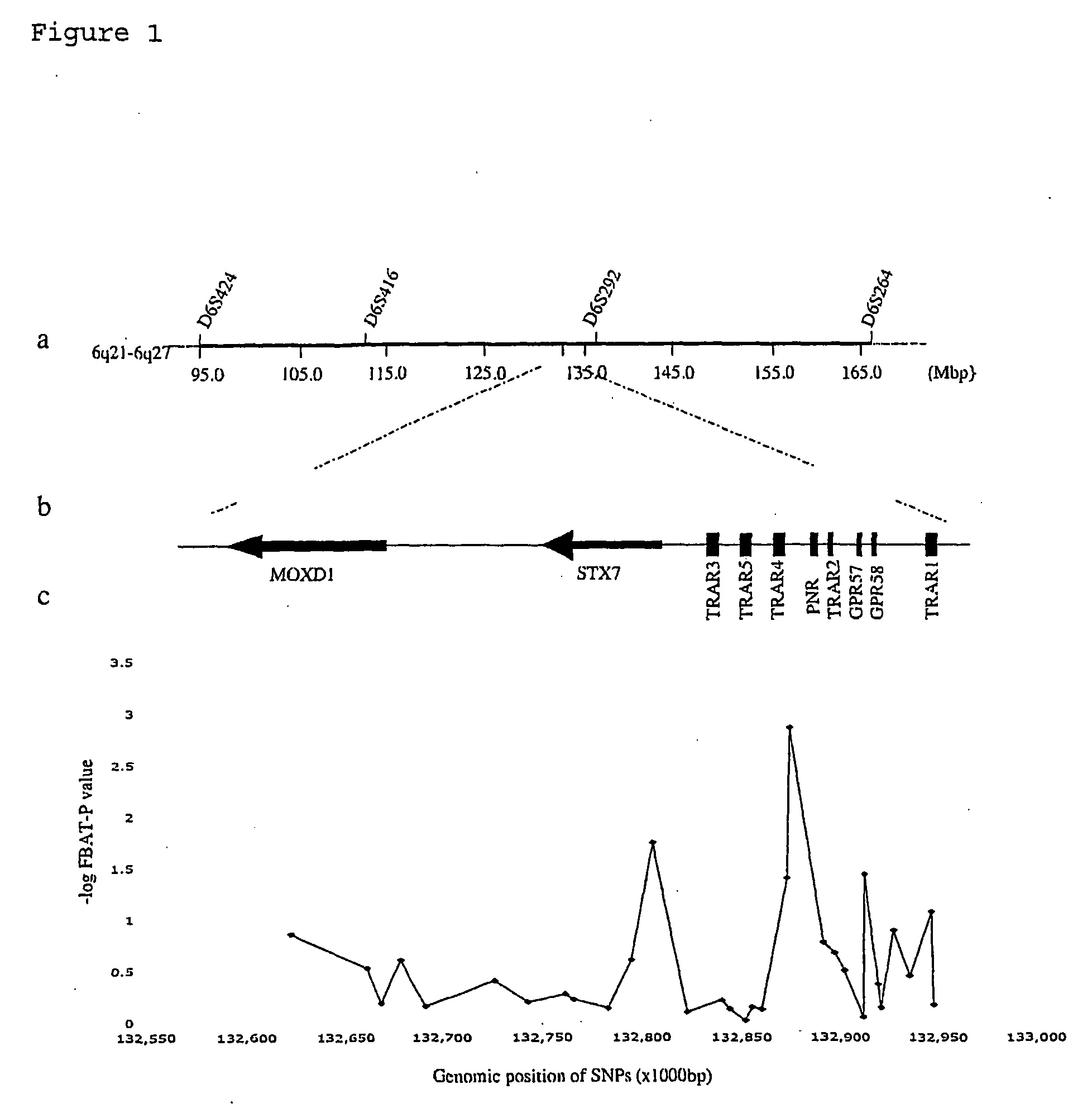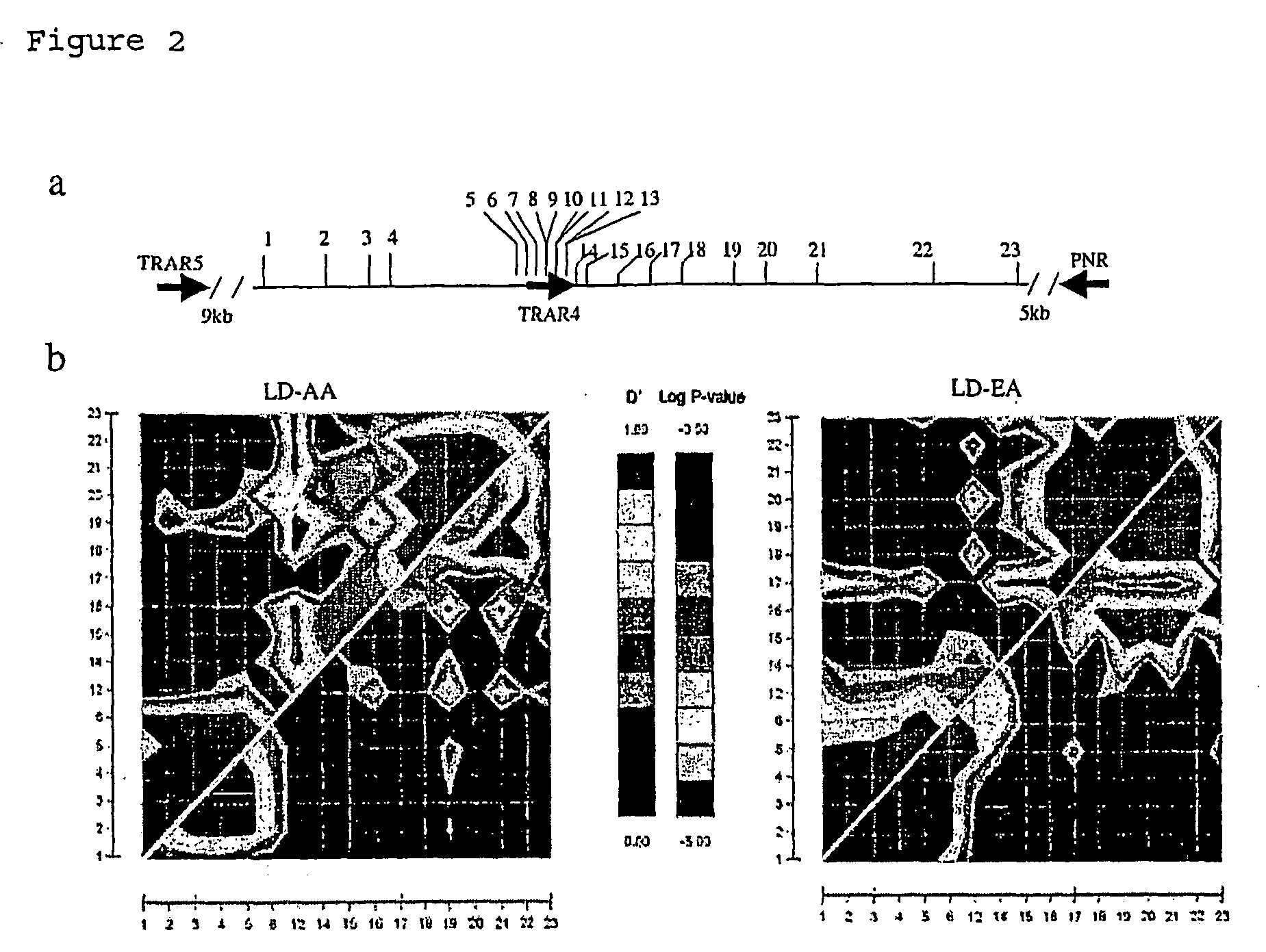Schizophrenia, Schizoaffective Disorder and Bipolar Disorder Susceptibility Gene Mutation and Applications to Their Diagnosis and Treatment
a technology of schizoaffective disorder and susceptibility gene, applied in the field of schizophrenia, schizoaffective disorder and bipolar disorder susceptibility gene mutation and applications to their diagnosis and treatment, can solve the problem of unfavorable end of all the aforementioned results as false positives
- Summary
- Abstract
- Description
- Claims
- Application Information
AI Technical Summary
Benefits of technology
Problems solved by technology
Method used
Image
Examples
example 1
[0071]Association results are presented in table 1 (FIG. 5) and can also be seen in supplementary table 5 (FIG. 9). Of 31 screening SNPs, four SNPs spanning 106 kb, two located in TRAR4, and one each in STX7 and GPR57, yielded a P-valuec), which was the only SNP that remained significant after Bonferroni correction for 31 tests. Association rs4305745 is located 1,214 bp downstream from the stop codon of TRAR4. We therefore concentrated further laboratory efforts on TRAR4. We aimed for a high-density map of>1 SNP per 2 kb by searching public SNP databases and sequencing genomic DNA. The TRAR4 gene was sequenced (˜1 kb of the 5′ region, the 1,038 bp CDS, and ˜1.5 kb of the 3′UTR, which spans rs4305745) in 30 probands selected from the NIMH-GI families: 16 European Ancestry (EA) and 14 African Americans (AA). Ten coding variants (26 total variants as seen in table 2 and supplementary table 6, FIG. 10) were found by sequencing TRAR4, including three previously found in 96 healthy EA ind...
example 2
[0075]The TRAR4 region was found to have two LD blocks, depicted in FIG. 2. Association rs4305745 (marker 16 in FIG. 2) is in the LD block constituted by 3′-flanking SNPs. The pattern suggests that association for TRAR4 originates from rs4305745. None of the 5′-flanking SNPs are in LD with rs4305745, which Instead is in strong LD with markers 19 (rs6903874) and 21 (rs6937506) from the 3′ LD block (and also shows a trend with marker 12, rs8192625). The LD pattern generated from the 31 initial screening markers indicated that the whole region of MOXD1-STX7-TRARs is separated into 4 major strong LD blocks, while the TRAR4 region represented by rs4305745 is not in strong LD with any of the major LD.
example 3
[0076]Haplotype association analyses with all TRAR4 two-locus systems were conducted (n=17, after excluding five markers with minor allele frequencies3%, detailed in supplementary table 9 (FIG. 13). All 17 of these two-locus systems exhibited P-values10)), are the mutations underlying the association of the TRAR4 region with schizophrenia.
[0077]To explore the possible functional effects of associated SNPs and their haplotypes, we first defined the conserved non-coding sequence (considered as a potential functional region) by comparative genomic analysis of TRAR4 genomic sequences of human, mouse, and rat using VISTA (Couronne et al. 2003). The cluster of three polymorphisms (rs4305745, ss28447873, and rs7452939—all equally implicated as candidates by the association analysis) exhibiting the most significant association is very close to two conserved regions (sequence identity>70% among human, mouse, and rat genomes) right after the stop codon. The sequence identity immediately aroun...
PUM
| Property | Measurement | Unit |
|---|---|---|
| schizoaffective disorder | aaaaa | aaaaa |
| bipolar disorder | aaaaa | aaaaa |
| frequency | aaaaa | aaaaa |
Abstract
Description
Claims
Application Information
 Login to View More
Login to View More - R&D
- Intellectual Property
- Life Sciences
- Materials
- Tech Scout
- Unparalleled Data Quality
- Higher Quality Content
- 60% Fewer Hallucinations
Browse by: Latest US Patents, China's latest patents, Technical Efficacy Thesaurus, Application Domain, Technology Topic, Popular Technical Reports.
© 2025 PatSnap. All rights reserved.Legal|Privacy policy|Modern Slavery Act Transparency Statement|Sitemap|About US| Contact US: help@patsnap.com



